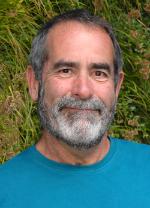Harry Vallack
Former staff
Visit Harry Vallack's profile on the York Research Database to:
- See a full list of publications
- Browse activities and projects
- Explore connections, collaborators, related work and more
Profile
Biography
Dr Harry Vallack worked for over 25 years on various aspects of air pollution at scales ranging from local to global. This included capacity building within non-OECD countries (including developing of suitable manuals/software) for the preparation of air pollutant emissions inventories, producing air pollution emission scenario projections for developing country regions, preparing the working paper for an international workshop on persistent organic pollutants (POPs) and developing methodologies for monitoring nuisance dust. Harry has also worked with the Centre for Low Carbon Futures on a review of the low carbon technologies that key UK energy intensive sectors might use to help meet national emissions targets by 2050.
Key skills
Air pollutant emissions inventory compilation and capacity building; Development of tools for modelling air pollutant emissions and their impacts on health, crops and climate; Soil carbon dynamics.
Career
- BSc (Biology, University of Exeter)
- MSc (Tropical forest ecology, University of Stirling
- PhD (Plant/soil carbon dynamics, University of York)
- 1977-78 Research assistant with the Tropical Forest Ecology Programme during the Royal Geographical Society's Mulu (Sarawak) Expedition.
- 1979 Lecturer in ecology at the University of Maryland (European Division), Dunoon, Scotland.
- 1980 – 1981 Research Assistant at the University of Stirling.
- 1982 – 1988 Beijer Institute Centre for Resource Assessment and Management (BICRAM), University of York.
- 1989 to 2019: Researcher at the Stockholm Environment Institute (SEI), University of York.
Research
Overview
Harry’s current research interests concern short-lived climate pollutants (SLCPs), global change ecology, soil carbon dynamics and capacity building for emissions inventory preparation in developing countries. In the process of this research, he has developed software tools to enable developing countries to compile air pollutant emission inventories. More recently he has helped develop a tool to assist countries prioritise alternative SLCP mitigation strategies, going from emissions estimates through to likely impacts on human health crop production and climate.
Projects
Climate and Clean Air Coalition (CCAC) project: Supporting National Planning for Action to Reduce Short-Lived Climate Pollutants (SNAP Initiative). Currently leading the development of the LEAP-IBC software tool to help countries prioritise action on SLCPs by producing emission scenarios and quantifying the health, crop yield and global temperature benefits from selected SLCP mitigation options.
SEI York staff: Harry Vallack, Johan Kuylenstierna, Chris Malley, Douglas Wang, (+Charlie Heaps, SEI Boston)
Partners: US-EPA, Daven Henze (Colorado University), The Molina Center for Strategic Studies in Energy and the Environment (California)
Defra BD5104: “Restoration of blanket bog vegetation for biodiversity, carbon sequestration and water regulation” http://peatland-es-uk.york.ac.uk/ (Funder Defra UK; £850k; Nov 2011 – March 2017). This catchment-scale project is acquiring experimental data from three UK sites to underpin the development and refinement of possible management techniques to address the dominance of heather (Calluna vulgaris) and facilitate the support of ‘active’ blanket bog vegetation (with peat-forming species, particularly Sphagnum spp.).
SEI York staff: Andreas Heinemeyer (PI); Harry Vallack (Co-investigator)
Partners: Yorkshire Peat Partnership, Natural England
Earth Observation & Modelling Agri-Tech to Understand Chinese Agricultural & Forest Fires in Relation to Management Practice & Climate Drivers. (STFC; £58k; July 2015 – March 2016). This project focuses on the two principal types of landscape scale burning that occur widely throughout parts of China (i) agricultural fires that burn in crop growing regions and which occur annually over very large areas, lit purposely to remove material from the land prior to harvest, and (ii) forest fires that occur in any one location very much less frequently than agricultural fires, but which can have significant impact on both forest ecology and forest resources, and which are generally also caused by human activities e.g. by fires spreading into forest from neighbouring agricultural lands. The project aims at further enhancing the use of Earth Observation, Remote Sensing and Simulation modelling in this area of Agri-Tech research and application, whilst also addressing ‘real-world’ issues in relation to Chinese agricultural, landuse and forestry practices.
SEI York staff: Lisa Emberson (PI); Harry Vallack, Chris Malley, Jon Ensor
Partners: Kings College London, Forest Research, University of Aberdeen, Swansea University, Kunming Institute of Botany.
Supervision
PhD Students (co-supervisor)
Andrianah Mbandi - Estimating atmospheric pollution emissions from transport in Nairobi, Kenya.
Olajide Olawoyin – Understanding trends in emissions and associated impacts in 3 West Africa countries – Ghana, Cote d’Ivoire and Nigeria
Anjar Priandoyo – Developing energy scenarios for Indonesia that will reduce Short-Lived Climate Pollutants (SLCPs) and their impacts.
Jehad Al-Busaidi - The implications of applying a short-lived climate pollutant approach in Oman and the West Asia region.
Publications
Selected publications
2017
Keane, J.B., Ineson, P., Vallack, H.W., Blei, E., Bentley, M., Howarth, S., McNamara, N. P., Rowe, R.L., Williams, M. and Toet, S. (2017) Greenhouse gas emissions from the energy crop oilseed rape (Brassica napus); the role of photosynthetically active radiation in diurnal N2O flux variation. Global Change Biology (In press)
Malley, C., Vallack, H. W., Ashmore, M. R., Kuylenstierna, J. C. I., Henze, D., Davila, Y., ... Turner, M. (2017) Updated Global Estimates of Respiratory Mortality in Adults ≥30 Years of Age Attributable to Long-Term Ozone Exposure. Environmental health perspectives, 125(8), [EHP1390]. DOI: 10.1289/ehp.0901220
Malley, C. S., Kuylenstierna, J. C. I., Vallack, H. W., Henze, D. K., Blencowe, H., and Ashmore, M. R. (2017) Preterm birth associated with maternal fine particulate matter exposure : A global, regional and national assessment. Environment International, 101: 173–182. DOI: 10.1016/j.envint.2017.01.023
2016
UNEP and CCAC (2016). Integrated Assessment of Short-Lived Climate Pollutants for Latin America and the Caribbean: improving air quality while mitigating climate change. Summary for decision makers. United Nations Environment Programme. Nairobi, Kenya. (Lead author Chapters 3 and 4)
2014
Vallack, H. W., Haq, G., Whitelegg, J. and Cambridge H. Policy pathways towards achieving a zero carbon transport sector in the UK in 2050. (2014) World Transport Policy and Practice, 20(4): 28-42.
2012
Vallack, H. W., Leronni, V., Metcalfe, D. B., Högberg, P., Ineson, P. & Subke, J. (2012) Application of nitrogen fertilizer to a boreal pine forest has a negative impact on the respiration of ectomycorrhizal hyphae. Plant and Soil, 352: 405-417. DOI 10.1007/s11104-011-1005-6
Subke, J.-A., Heinemeyer, A., Vallack, H.W., Leronni, V., Baxter, R. & Ineson, P. (2012) Fast assimilate turnover revealed by in situ 13CO2 pulse-labelling in Subarctic tundra. Polar Biology, 35(8): 1209-1219. DOI: 10.1007/s00300-012-1167-6
2009
Subke, J. A., Vallack, H. W., Magnusson, T., Keel, S. G., Metcalfe, D. B., Högberg, P., Ineson, P. Short-term dynamics of abiotic and biotic soil 13CO2 effluxes after in situ 13CO2 pulse labelling of a boreal pine forest. (2009) New Phytologist, 183: 349-57.
2001
Vallack, H.W., Cinderby, S., Kuylenstierna, J.C.I. and Heaps, C. (2001) Emission inventories for SO2 and NOx in developing country regions in 1995 with projected emissions for 2025 according to two scenarios. Water, Air and Soil Pollution 130, 217-222.
Kuylenstierna, J.C.I., Hicks, W.K., Cinderby, S., Vallack, H.W. and Engardt, M. (2001) Uncertainty in mapping acidification risk scenarios to terrestrial ecosystems in Asian countries. Water, Air and Soil Pollution 130, 1175-1180.
1998
Vallack, H.W., Bakker, D.J., Brandt, I, Broström-Lundén, E., Brouwer A., Bull, K.R., Gough, C., Guardans, R., Holoubek, I., Jansson, B., Koch, K., Kuylenstierna, J., Lecloux, A., Mackay, D., Mccutcheon, P., Mocarelli, P., Scheidegger, N.M.I., Sunden-Bylehn, A. and Taalman, R.D.F. (1998) Controlling persistent organic pollutants - What next? Environmental Toxicology and Pharmacology 6, 143-175.
Selected Reports and Book Contributions
2016 UNEP and CCAC. Integrated Assessment of Short-Lived Climate Pollutants for Latin America and the Caribbean: improving air quality while mitigating climate change. Summary for decision makers. United Nations Environment Programme. Nairobi, Kenya. (Lead author of Chapters 3 and 4)
2012 Global Energy Assessment – Toward a Sustainable Future. Cambridge University Press, Cambridge UK and New York, NY, USA and the International Institute for Applied Systems Analysis, Laxenburg, Austria. (Contributing author)
2012 Vallack, H.W. and Rypdal, K. The Global Atmospheric Pollution Forum Air Pollutant Emissions Inventory Manual. July 2012. Stockholm Environment Institute, University of York, UK. [https://www.sei-international.org/tools/1646]
2011 UNEP Synthesis report. Near-term Climate Protection and Clean Air Benefits: Action for Controlling Short-Lived Climate Forcers. United Nations Environment Programme (UNEP), Nairobi, Kenya, 78pp. (Lead author)
2011 UNEP/WMO Assessment report. Integrated Assessment of Black Carbon and Tropospheric Ozone. United Nations Environment Programme (UNEP), Nairobi, Kenya. (Lead author of Chapters 2 and 5) http://www.unep.org/dewa/Portals/67/pdf/BlackCarbon_report.pdf
2011 Vallack, H., Timmis, A., Robinson K., Sato, M., Kroon, P. and Plomp, A. Technology Innovation for Energy Intensive Industry in the United Kingdom. July 2011. Report no. 601, The Centre for Low Carbon Futures.


